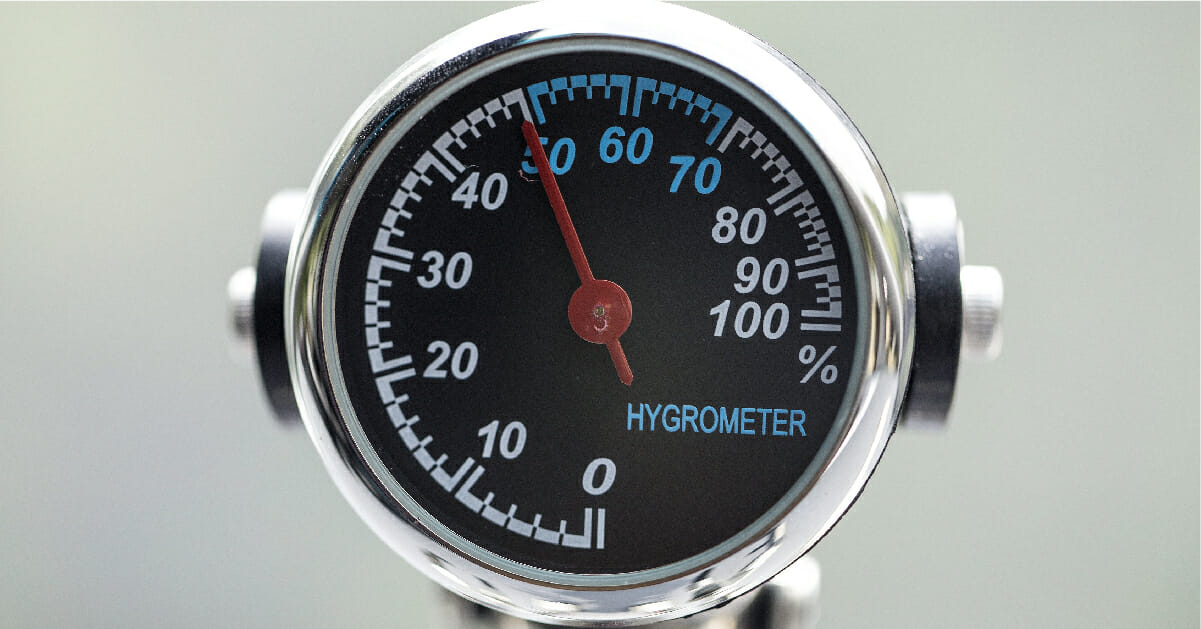What is relative humidity and why is it important?

Key Takeaways
When it comes to storing, well – pretty much anything – relative humidity can cause damage to everything from food to furniture. It also can create health problems for workers.
But what exactly is relative humidity? And why is it important to your business? Let’s break down the basics so you can see why proper humidity control is so significant in your facility.
Relative humidity. Defined.
Relative Humidity, or RH as the kids call it, is defined as, “a ratio, expressed in percent, of the amount of atmospheric moisture present relative to the amount that would be present if the air were saturated, according to the National Oceanic and Atmospheric Administration (NOAA).
RH is how we describe how much moisture is in the air vs. the maximum amount air could hold at any given temperature.
So, what Does that mean in simple terms?
- Relative humidity is how we describe how much moisture is in the air vs. the maximum amount air could hold at any given temperature.
- Warmer air is capable of holding more water vapor.
- RH is written as a percent. For example 0% RH means the air is completely dry. 100% RH means mist or dew is about to form as the vapor condenses.
- When temperature drops below the dew point, water vapor becomes precipitation such as rain, snow or dew.
- Generally, RH is written generally like this: 80F, 60% RH.
What industries does RH affect?
Relative humidity matters in a variety of industries for many reasons. So, let’s take a look at how it can affect businesses in several settings.
RH Affects Many Industries Including
- Cold-storage facilities
- Food-processing plants
- Climate-controlled storage facilities
Cold-storage facilities
Humidity and temperature must be exact in a cold storage facility to ensure items are preserved appropriately.
Whether storing food or chemicals, keeping consistent humidity levels is key to preventing ice buildup and damage to equipment and stored goods. Keeping control of humidity in this setting is difficult for multiple reasons but largely because items are often stored in cardboard and paper packaging, two materials moisture loves.
Food-processing plants
From ruining ingredients to creating frost build up that slows production, high humidity is an unwelcomed guest at food-processing facilities. Also, humidity issues can create condensation, which leads to slick floors. The result: Potentially injured workers which impacts productivity.
Climate-controlled storage facilities
In a storage facility, ensuring stored items aren’t ruined is basically the name of the game. High relative humidity fosters mold and mildew growth, which damages documents, boxes, wood furniture and upholstery.
Why is Relative Humidity Important?
Not to oversimplify, but the reason is fundamental: maintaining correct relative humidity is the most significant step you can take to ensure mold, mildew, condensation and ice don’t interfere with your everyday business.
Using an Air Conditioner to lower humidity is inefficient and usually doesn’t do the trick. It’s like asking a dermatologist to do heart surgery.
What are some Myths when it comes to Maintaining RH?
Unfortunately, a lot of humidity myths and inaccurate information have led to a lack of overall understanding of the issue. That leads to the use of inefficient and ineffective practices.
For example: Using an air conditioner to lower humidity is inefficient and usually doesn’t do the trick. It’s like asking a dermatologist to do heart surgery. Yes, they both work with the human body (air, in our case), but they don’t handle the same types of problems.
Want to learn more about how dehumidifiers improve your facility’s performance, efficiency, and safety? Check out our blog.
Published on Nov 17 2020
Last Updated on Apr 16 2024
Categories: Cold Chain, Energy & Utilities, Sports & Recreation
